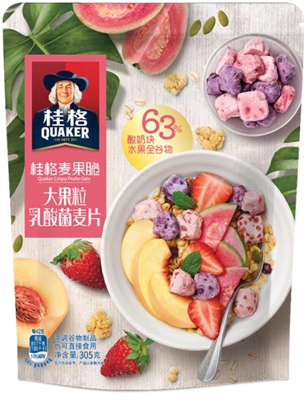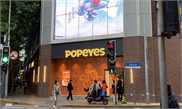SOURCE / PRESS RELEASE
Multinational food giants eye Chinese cereal market

Photo:Quaker
Multinational food giants across the world are eyeing the Chinese market as the country has an expanding middle class that is paying more attention to balanced diets and premium food products.
Quaker, one of the leading cereal brands under food and beverage giant PepsiCo, entered the Chinese market many years ago and has expanded its market share with new products tailored for Chinese consumers and more comprehensive promotion strategies.
"Cereal has been widely embraced by Chinese consumers," Laura Tang, senior director of the Nutrition Category at PepsiCo Greater China, told the Global Times. It has expanded from a breakfast food to a snack food, and to fitness management, she said.
With a broad portfolio, Quaker offers a variation of products for different consumer groups in China, Tang said, noting that young white-collar workers are the brand's core target.
Quaker's products in China are specially tailored to the nutritional needs of Chinese consumers, read a statement the company sent to the Global Times. It is partnering with the China Nutrition Society (CNS) to upgrade industry standards and promote development.
Quaker is planning to roll out two new products in China in 2020. Quaker Granola Lactic targets consumers who use digitalized platforms, with customizable contents to inspire them to share the product online, she said. Quaker Black and White High Fiber Multi-grain is a nutritious solution targeting white-collar workers who care about their health and weight management.
China has a rich breakfast culture with varied choices in each city. Chinese consumers, especially the younger generations, have paid increasing attention to balanced diets. Many are choosing to eat more whole grain products and less processed food to maintain their health and a reasonable weight.
According to the Chinese Dietary Guidelines, the daily recommended intake of whole grains is 50-150 grams, which is not reached by many Chinese residents. With a surging middle-class and enhanced awareness of the need for a balanced diet, the cereal market in China has promising prospects.
Premium products have gained more and more consumers in China, Tang said.
According to German-based industrial data and analysis provider statista.com, the breakfast cereal sector is estimated to bring in revenues of $5.7 billion in China in 2020. The market is expected to grow annually by 6.9 percent in the next five years.
China, with a population of 1.4 billion people, recorded a 70,892 yuan ($10,066) per capita GDP in 2019, up 5.7 percent year-on-year, according to data from the National Bureau of Statistics.
The nation has the largest middle class in the world, estimated to range from 500-700 million people in total, reports said in January, citing Vice President of the Chinese Academy of Social Sciences Cai Fang.
Switzerland-based Nestlé and Japan-based Calbee are also stepping up efforts to draw more consumers in China.

